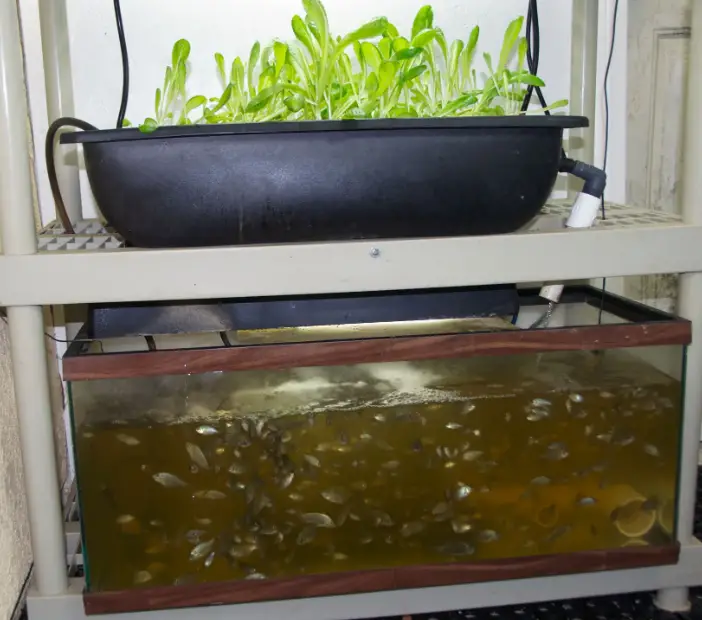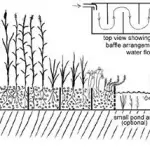
How to Build an Aquaponic System? Aquaponics is a system that combines aquaculture and hydroponics to create an ecosystem where fish thrive, plants grow, and waste from the fish is converted into nutrients for the plants.
Aquaponics has been around for centuries, but it wasn’t until recently that it gained widespread appeal as an accessible and cost-effective way to produce high-quality fish and vegetables in a small space.
If you want to learn how to build your own aquaponic system at home, keep reading!
Fish
When you are considering building your own aquaponic system, you might be wondering how to go about it. Luckily, it is not as difficult as it seems.
In fact, you can make a system for your fish in just a day or two. You will need a fish tank and a few supplies for the plants and fish.
First, you will need a network of PVC pipes that run on top of your fish tank. These pipes will distribute water from the fish tank throughout your growing area. You should space them 12 inches apart, with holes about 1/4-inch deep.
Once you have the pipes in place, you can plant seedlings at each hole. You will also need an aerator to add a consistent supply of oxygen to the water, which is essential for the fish.
Plants
There are several different types of plants that grow well in an aquaponic system. Cucumbers are one such plant that will thrive in an aquaponics system. These plants need a low level of maintenance and are naturally resistant to disease and bugs.
Ginger is a robust herb that can be grown in an aquaponic system. It has a peppery flavor and is traditionally used in Asian dishes. It is also useful for making ginger beer and cordial.
However, you must keep the plant small and trim it regularly. Ginger is not a fast-growing plant, so it is best to start it from cuttings and plant it in a corner of the system.
Media
If you want to start growing your own food, an aquaponic system might be for you. With the right setup, you can grow vegetables, fruit, and even fish. These systems require the use of pebbles or other substrate, which will allow your plants to reach deeper roots and draw nutrients from the water. However, it is imperative to feed your fish properly.
It’s best to feed them twice a day, and you’ll need to carefully monitor their behavior and water quality. Another important factor to consider is the pH level of the water. You should keep it between 6.8 and 7.0.
An aquaponic system requires an aerator to provide oxygen to the fish. This device pumps water from the fish tank to the soil-grown plants. A bell siphon is a critical piece of aquaponic hardware.
pH level
The pH level of an aquaponic system is vital for the health of fish, plants, and bacteria. There are two ways to test the pH level. One method is to use pH test strips. These are cheaper, but they can be subjective.
A more accurate way is to use pH meters. These contain probes that must be kept moist to give accurate readings.
If the pH level of your water is too acidic, you can use a carbonate buffer. This product can be purchased at aquaponics suppliers. Potassium carbonate is effective at raising the pH level.
Nitric acid and muriatic acid can also be used, but they can be intense. Many aquaponics growers prefer phosphoric acid.

Adding fish
Adding fish to an aquaponics system is a great way to add diversity to your growing system. The waste products from fish provide the essential nutrients that plants need. The water is then passed over the plants to absorb these nutrients.
Koi, tilapia, and other species are ideal choices for aquaponics systems. These fish are known for their hardiness, ability to tolerate cold and high temperatures, and resistance to common parasites.
When adding fish to an aquaponic system, it is important to test the water quality and nitrate levels. Nitrite levels should be below one part per million (ppm) to prevent the growth of harmful bacteria.
Nitrates and ammonia levels should be zero before adding fish to your system. If nitrite and ammonia levels are high, half water exchange will lower them.
However, if you still find that these parameters are high, you can consider introducing nitrifying bacteria to your media bed.
Creating multiple plant beds
Creating multiple plant beds in an aquapotic system is a great way to increase your crop yield. This type of system uses a multi-layered structure that involves a fish tank and a grow-bed, separated by a vertical water drainage pipe.
The fish tank is at the lowest level, touching the ground. The grow-beds are located above the fish tank, with one or more plant beds per layer.
In order to have the best results, you must ensure that the water in your aquaponic system is clean.
This is because fish produce ammonia, which is poisonous to plants and fish. Generally, a pH level of 7.0 to 7.5 is ideal for fish.
Adding fish to a DIY aquaponics system
Adding fish to a DIY aquaponias system requires a few important steps. First, you should check the pH and EC levels of the water in the system. This can be done using a pH/EC test meter. If the levels are out of whack, you can add a pH/EC adjuster.
Once you have the fish and the plants, you can start growing your own food. You can also add seedlings or plugs to your DIY aquaponics system. You should make sure that the plant roots reach the water and nutrients properly.
The most time-consuming part of aquaponics is feeding the fish, but you can also get an automatic feeder for your fish.
Conclusion
Building your own aquaponic system is very easy and inexpensive, and there are many reasons to do it. Experience using and building aquaponic systems will help you get the most out of your investment.
This guide is designed to help you build an all-in-one eco-system that will grow nutritious and delicious vegetables, herbs, and fruits. I hope this guide helps you get your feet wet in the world of aquaponics.
Thanks for stopping by serconline.
Useful links:
https://serconline.org/knowledge-base/
https://serconline.org/product-reviews/
https://serconline.org/about-us/
https://serconline.org/contact-us/




